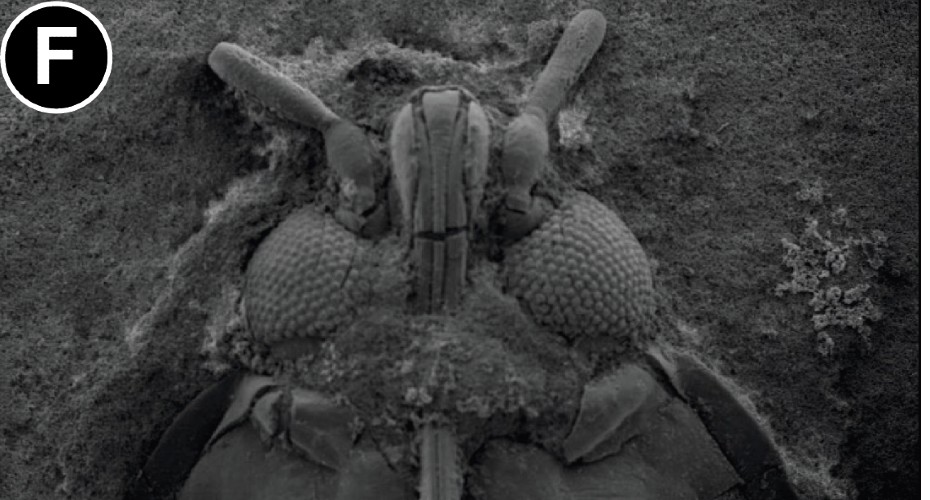‘Treasure-trove” of fossilized single-celled organisms, dating back more than 110 million years, discovered

One of the fossilized insects studied for the research
Scientists have unearthed a treasure-trove of almost perfectly formed fossilized single-celled organisms dating back more than 110 million years.
A team of researchers from the University of Exeter and University of Lausanne have found exquisitely preserved fossil prokaryotes – single celled organisms, including bacteria – on fossilized bugs from the Lower Cretaceous Crato Formation of Brazil.
Although pyritized prokaryote traces are commonly discovered in sedimentary rocks, it is almost unheard-of to find them preserved in three dimensions in situ alongside larger well-preserved fossils.
The discovery could pave the way for a greater understanding of how pyritization – a process which involves the deposition of iron and sulfur into the pores and cavities of an organism – can preserve fossils.
The study is published online in the journal Geology.
The research team made the new discovery after examining previously unearthed insect fossils from the Crato Formation – which dates back to the Early Cretaceous and is located in the north-east of Brazil.
The Crato Formation is famed for its exceedingly well-preserved and diverse fossil discoveries, which often reveal new insights into ecosystem evolution.
While examining the insects, the scientists discovered the widespread presence of spherical microorganisms preserved on the fossils.
The research team believe that these micro-organisms inhabited the carcasses of the insects and were fossilized along with them when they reached the site of fossilization.
Crucially, the study suggests the fossilisation process must have occurred exceedingly rapidly (within hours), in order for the organisms to be preserved so well.
Dr Nathan Barling described it as a “truly remarkable discovery”.
He said: “We spotted these microfossils while examining the insect fossils, which were originally discarded as ‘uninteresting’. We didn’t really believe what we had found at first, since it didn’t seem possible. But, after three years of eliminating the alternatives, it now seems most likely that these are indeed immaculately preserved fossils of prokaryote micro-organisms, possibly coccoid bacteria, from over 110 million years ago.
“In life, these bacteria were resting on the carcass of an insect, probably decomposing it, as the carcass was washed into an ancient salty lake by a storm. It then sank down to the oxygen-poor bottom of the lake where the activities of other bacteria caused the iron mineral pyrite (fool’s gold) to rapidly replace the insect carcass and its associated bacteria.”
Dr Xiaoya Ma, co-author of the study added: “The Lower Cretaceous (about 113 million years ago) Crato Formation is a fossil assemblage in northeastern Brazil that yields exceedingly well preserved and diverse fossils (e.g., insects, fishes, dinosaurs, pterosaurs, etc.).
“It is very rare to find fossil bacteria or other prokaryotes preserved alongside larger macrofossils, particularly as pyritized cells. This study highlights the unique diagenetic and palaeo-environmental conditions of the Crato Formation that facilitated this mode of fossilization.”
Co-author Dr Farid Saleh added: “This discovery represents a paradigm shift in our understanding of what pyrite can preserve in the fossil record. We’ve previously thought that pyrite coarsely replaced tissues during fossilization. These micro-fossils are very small and highly detailed, demonstrating that pyritization can replicate soft tissues at the micron scale and must have occurred in hours, rather than over days, months, or millions of years. Otherwise, these prokaryotes would have not been preserved.”
A unique record of prokaryote cell pyritization is published in Geology on September 12th 2023.



